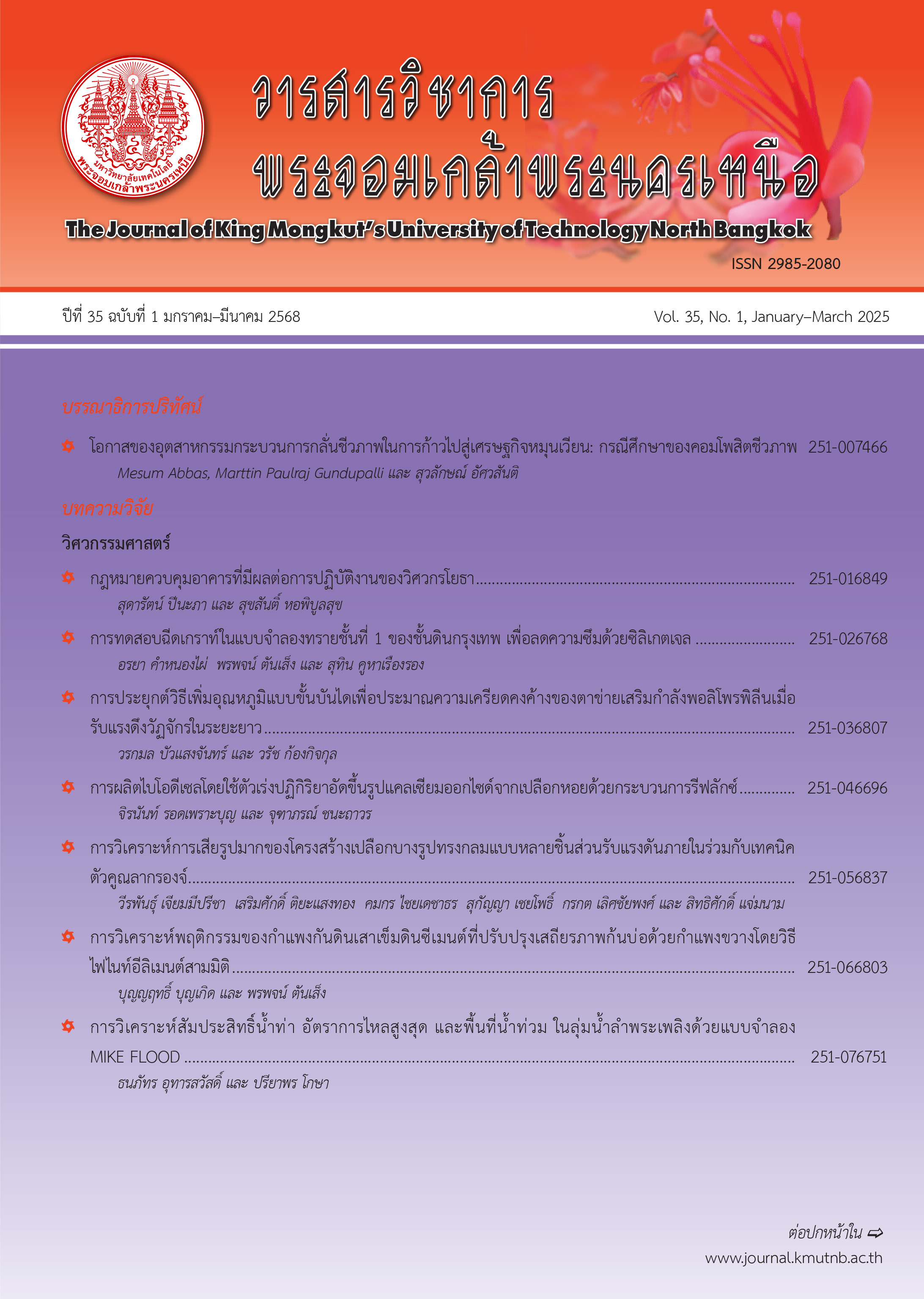Application of Stepped Isothermal Method for Estimation of Long-Term Cyclic Residual Strain of a Polypropylene Geogrid
Main Article Content
Abstract
During service, geosynthetic-reinforced soil (GRS) structures are often subjected to cyclic loading, such as traffic loading, which causes cyclic tensile loading to occur in the geosynthetic reinforcement. This cyclic loading results in the development of cyclic residual strain (Δεcyclic) in the geosynthetic reinforcement, which can cause excessive global deformation of the GRS structure. This research aims to examine the development of Δεcyclic in a polypropylene geogrid under various levels of tensile load (LL), as well as various double amplitudes (DA) and frequencies (f) of cyclic loading. To accelerate the process, an ambient temperature increase technique is employed, where the temperature is increased from 30°C to 50°C in steps while keeping it constant for one hour in each step. The test results were analysed to establish the relationship between Δεcyclic and the number of cycles (Nc) at the reference temperature of 30°C. These relationships were then used to examine the effects of LL, DA, and f. The study found that Δεcyclic increases with increasing LL, but decreases with increasing DA. The effect of f was found to be insignificant, suggesting that the rate-dependent property of the geogrid is the main factor contributing to Δεcyclic, while the rate-independent cyclic loading effect is insignificant.
Article Details

This work is licensed under a Creative Commons Attribution-NonCommercial-NoDerivatives 4.0 International License.
The articles published are the opinion of the author only. The author is responsible for any legal consequences. That may arise from that article.
References
D. Hirakawa, W. Kongkitkul, F. Tatsuoka, and T. Uchimura, “Time-dependent stress-strain behaviour due to viscous properties of geogrid reinforcement,” Geosynthetics International, vol. 10, no. 6, pp. 176–199, 2003.
W. Kongkitkul, W. Tabsombut, C. Jaturapitakkul, and F. Tatsuoka, “Effects of temperature on the rupture strength and elastic stiffness of geogrids,” Geosynthetics International, vol. 19, no. 2, pp. 106–123, 2012.
W. Kongkitkul, D. Hirakawa, F. Tatsuoka, and T. Uchimura, “Viscous deformation of geosynthetic reinforcement under cyclic loading conditions and its model simulation,” Geosynthetics International, vol. 11, no. 2, pp. 73–99, 2004.
J. S. Thornton, “Conventional and stepped isothermal methods for characterizing longterm creep strength of polyester geogrids,” Proc. of the 6th International Conference on Geosynthetics, Atlanta, vol. 2, pp. 691–698, 1998.
W. Kongkitkul and F. Tatsuoka, “A theoretical framework to analyse the behaviour of polymer geosynthetic reinforcement in temperatureaccelerated creep tests,” Geosynthetics International, vol. 14, no. 1, pp. 23–38, 2007.
F. Tatsuoka, “Inelastic deformation characteristics of geomaterial,” Solid Mechanics and its Applications, vol. 146, pp. 1–108, 2007.
W. Kongkitkul, D. Hirakawa, and F. Tatsuoka, “Residual deformation of geosyntheticreinforced sand in plane strain compression affected by viscous properties of geosynthetic reinforcement,” Soils and Foundations, vol. 48, no. 3, pp. 333–352, 2008.
U. Aqil, F. Tatsuoka, T. Uchimura, T. N. Lohani, Y. Tomita, and K. Matsushima, “Strength and deformation characteristics of recycled concrete aggregate as a backfill material, Soils and Foundations, vol. 45, no. 5, pp. 53–72, 2005.

